
Starved Rock State Park: Nature's Hidden Gem in Illinois
Explore Starved Rock State Park in Illinois, where sandstone canyons, seasonal waterfalls, and rich history create an unforgettable outdoor adventure.
Starved Rock State Park, located along the Illinois River, is a haven for outdoor enthusiasts and nature lovers. The park is renowned for its stunning sandstone canyons, many of which feature seasonal waterfalls that create a serene and picturesque landscape. With 13 miles of well-maintained trails, visitors can explore the park's diverse terrain, ranging from dense forests to open bluffs offering breathtaking views of the river below. In addition to its natural beauty, Starved Rock State Park is steeped in history. The park's name originates from a Native American legend, adding a layer of cultural significance to the area. Interpretive programs and guided tours provide insights into the park’s past, allowing visitors to appreciate both its natural wonders and historical context. The park is also a hotspot for wildlife observation. Bird watchers can spot a variety of species, including bald eagles during the winter months. The park's rich biodiversity is evident in its flora and fauna, making it a perfect destination for nature photography and educational trips. Whether you're hiking, picnicking, or simply soaking in the views, Starved Rock State Park offers a peaceful retreat from the hustle and bustle of everyday life.
Local tips in Starved Rock State Park
- Wear sturdy shoes for hiking; trails can be uneven and muddy, especially after rain.
- Visit in winter for a chance to see bald eagles along the Illinois River.
- Pack a picnic; there are several scenic spots perfect for a meal with a view.
- Check the park’s website for trail conditions and any seasonal closures before you go.
- Consider a guided tour to learn more about the park's history and geology.
- Early morning or late afternoon visits offer the best lighting for photography.
Starved Rock State Park: Nature's Hidden Gem in Illinois
Starved Rock State Park, located along the Illinois River, is a haven for outdoor enthusiasts and nature lovers. The park is renowned for its stunning sandstone canyons, many of which feature seasonal waterfalls that create a serene and picturesque landscape. With 13 miles of well-maintained trails, visitors can explore the park's diverse terrain, ranging from dense forests to open bluffs offering breathtaking views of the river below. In addition to its natural beauty, Starved Rock State Park is steeped in history. The park's name originates from a Native American legend, adding a layer of cultural significance to the area. Interpretive programs and guided tours provide insights into the park’s past, allowing visitors to appreciate both its natural wonders and historical context. The park is also a hotspot for wildlife observation. Bird watchers can spot a variety of species, including bald eagles during the winter months. The park's rich biodiversity is evident in its flora and fauna, making it a perfect destination for nature photography and educational trips. Whether you're hiking, picnicking, or simply soaking in the views, Starved Rock State Park offers a peaceful retreat from the hustle and bustle of everyday life.
When is the best time to go to Starved Rock State Park?
Iconic landmarks you can’t miss
Matthiessen State Park
Experience the unparalleled natural beauty and outdoor adventures at Matthiessen State Park in Oglesby, Illinois.

Starved Rock State Park Visitor Center
Discover the natural beauty and rich history of Illinois at the Starved Rock State Park Visitor Center, your gateway to adventure and exploration.

Grand Bear Resort at Starved Rock
Experience adventure and relaxation at Grand Bear Resort at Starved Rock, featuring a water park, arcade, and beautiful natural surroundings.

Starved Rock Lodge & Conference Center
Experience the natural beauty and historic charm of Starved Rock Lodge, a premier destination for relaxation and adventure in Illinois's scenic landscapes.

Buffalo Rock State Park
Explore Buffalo Rock State Park: A Scenic Retreat Along the Illinois River, Perfect for Hiking, Picnicking, and Wildlife Watching.

Starved Rock State Park Campground
Experience the breathtaking beauty and outdoor adventure at Starved Rock State Park Campground, a perfect getaway in Illinois for nature lovers.
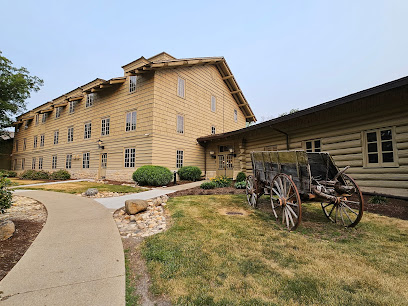
Wildcat Canyon
Experience the stunning beauty of Wildcat Canyon in Starved Rock State Park, a perfect destination for hiking and nature exploration.

Matthiessen State Park Fort
Explore the serene beauty of Matthiessen State Park, featuring stunning canyons, waterfalls, and miles of scenic trails in Oglesby, Illinois.

LaSalle Canyon
Discover LaSalle Canyon in Illinois, a stunning hiking area with breathtaking views, waterfalls, and diverse wildlife, perfect for outdoor enthusiasts and nature lovers.

I&M Canal Boat
Explore the historic I&M Canal Boat in La Salle, Illinois – a unique blend of nature and history awaits you on the water.

Lover's Leap Overlook
Discover stunning views and serene atmosphere at Lover's Leap Overlook, a picturesque destination in Oglesby, Illinois, perfect for nature lovers and photographers.

KAYAK STARVED ROCK CAMPGROUND
Discover the beauty of nature at Kayak Starved Rock Campground, your gateway to adventure and relaxation near Starved Rock State Park.

Starved Rock Family Campground
Experience the natural beauty and family-friendly charm of Starved Rock Family Campground, your perfect outdoor getaway in Illinois.

Illinois Canyon
Explore the breathtaking Illinois Canyon in Starved Rock State Park, an outdoor paradise filled with stunning landscapes and vibrant wildlife.

Illinois Waterway Visitors Center
Explore the Illinois Waterway Visitors Center, where nature meets education in a stunning riverside setting.

Unmissable attractions to see
Starved Rock State Park Visitor Center
Explore the natural beauty and rich history of Starved Rock State Park at the informative Visitor Center, your gateway to adventure in Illinois.
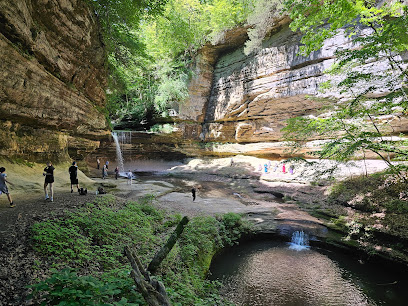
Grand Bear Resort at Starved Rock
Experience the ultimate family getaway at Grand Bear Resort, where adventure meets relaxation near the stunning Starved Rock State Park.

Starved Rock Lodge & Conference Center
Experience the perfect blend of nature and comfort at Starved Rock Lodge & Conference Center, a historic retreat in Starved Rock State Park, Illinois.

Buffalo Rock State Park
Experience the stunning vistas and diverse wildlife at Buffalo Rock State Park, a perfect outdoor retreat along the Illinois River.

Starved Rock State Park Campground
Experience the natural beauty and tranquility of Starved Rock State Park Campground, a must-visit destination for outdoor enthusiasts in Illinois.

KAYAK STARVED ROCK CAMPGROUND
Experience the great outdoors at Kayak Starved Rock Campground, your gateway to adventure and relaxation near Starved Rock State Park.

Starved Rock Entertainment
Experience the thrill of escape rooms and family fun at Starved Rock Entertainment, North Utica's premier destination for adventure and excitement.

Starved Rock
Explore Starved Rock, Illinois, a stunning mountain peak with scenic trails, rich history, and breathtaking landscapes perfect for every nature lover.

Essential places to dine
Grand Bear Resort at Starved Rock
Discover family fun and natural beauty at Grand Bear Resort near Starved Rock State Park - your ultimate getaway destination!

Starved Rock Lodge & Conference Center
Discover nature's beauty at Starved Rock Lodge & Conference Center - where history meets adventure amidst stunning landscapes.

The Rootbeer Stand
Experience classic American fast food at The Rootbeer Stand in Oglesby, IL – where delicious flavors meet nostalgic charm.

Uptown Grill
Discover Uptown Grill: A delightful American restaurant in La Salle offering exquisite cuisine and an inviting atmosphere perfect for all occasions.

Jamie's OutPost
Discover delicious grilled cuisine and unique souvenirs at Jamie's OutPost in North Utica - your perfect stop on the way to Starved Rock.

Skoog's Pub & Grill
Experience delicious American cuisine at Skoog's Pub & Grill in North Utica – where great food meets warm hospitality.

Hank's Farm Restaurant
Discover Hank's Farm Restaurant in Ottawa, Illinois - where American comfort food meets warm hospitality near stunning natural attractions.

HiWay Restaurant Inc
Experience the warmth of family dining at HiWay Restaurant in Ottawa, IL - your go-to spot for classic American breakfast and diner favorites.

Haze Smokehouse
Discover Haze Smokehouse: A barbecue haven in La Salle offering smoky flavors, live music, and an unforgettable dining experience.

Four Star Family Restaurant
Discover family-friendly dining at Four Star Family Restaurant in Peru, IL – where delicious American classics meet warm hospitality.

Starved Rock Lodge Restaurant
Experience exquisite dining surrounded by nature's wonders at Starved Rock Lodge Restaurant in Illinois.

Lodi Tap House - Utica
Experience the flavors of North Utica at Lodi Tap House, where craft beer meets delicious cuisine in a warm and inviting atmosphere.

Bakery & Cafe Nonies
Experience the charm of Bakery & Cafe Nonies - where fresh flavors meet cozy ambiance in North Utica.
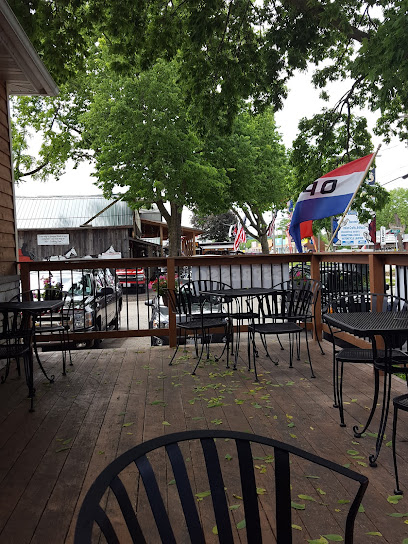
Mr. Salsa's, Inc.
Experience the vibrant tastes of Mexico at Mr. Salsa's in Oglesby – where every meal is a celebration of flavor.

Red Dog Grill
Discover the delightful flavors at Red Dog Grill in Ottawa - where great food meets scenic views for an unforgettable dining experience.

Markets, malls and hidden boutiques
Starved Rock State Park
Discover the breathtaking beauty of Starved Rock State Park, a natural wonderland of canyons, waterfalls, and diverse wildlife in Illinois.

Walmart Supercenter
Explore Walmart Supercenter in Ottawa, IL for unbeatable prices on groceries, clothing, and home goods—perfect for all your travel needs!

Jeremiah Joe Coffee - Downtown Ottawa
Discover the cozy charm of Jeremiah Joe Coffee, a community favorite in Downtown Ottawa known for its artisanal brews and inviting atmosphere.
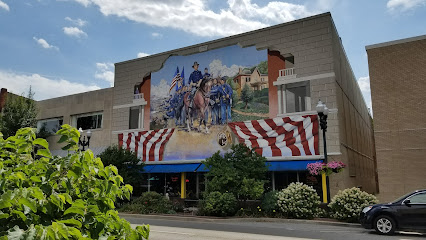
La Quinta Inn by Wyndham Peru Starved Rock State Park
Discover comfort and adventure at La Quinta Inn by Wyndham Peru, your gateway to Starved Rock State Park's natural beauty.

Quality Inn Peru near Starved Rock State Park
Discover the perfect blend of comfort and adventure at Quality Inn Peru, your ideal base for exploring Starved Rock State Park and beyond.

Bruce & Ollie's Ice Cream, Specialty Coffee & Deli
Experience the ultimate treat at Bruce & Ollie's Ice Cream, Specialty Coffee & Deli in North Utica, IL, where flavors and hospitality blend seamlessly.

Starved Rock River and Trail Supply
Discover outdoor adventures at Starved Rock River and Trail Supply, your one-stop shop for fishing gear and local expertise near Starved Rock State Park.

Essential bars & hidden hideouts
Starved Rock State Park
Discover the breathtaking canyons, waterfalls, and diverse wildlife of Starved Rock State Park, a true natural wonder in Illinois.

Cracker Barrel Old Country Store
Experience the charm of traditional American dining at Cracker Barrel Old Country Store in Ottawa, Illinois, where comfort food meets a warm, inviting atmosphere.

Grand Bear Resort at Starved Rock
Discover a family-friendly paradise at Grand Bear Resort, featuring a water park, dining, and easy access to the natural beauty of Starved Rock State Park.

Starved Rock Lodge & Conference Center
Discover the enchanting Starved Rock Lodge & Conference Center, where nature meets comfort in the heart of Illinois' stunning landscapes.

Uptown Grill
Experience a delightful blend of flavors at Uptown Grill, the ultimate destination for American cuisine and vibrant bar atmosphere in La Salle, Illinois.

Skoog's Pub & Grill
Experience the taste of America at Skoog's Pub & Grill, where hearty dishes and a warm atmosphere await in North Utica.

Starved Rock Lodge Restaurant
Experience exquisite dining at Starved Rock Lodge Restaurant, where nature meets culinary delight in the heart of Starved Rock State Park.

Starved Rock State Park Campground
Discover the natural beauty of Starved Rock State Park Campground, where adventure meets tranquility in the heart of Illinois.

Sam's Pizza
Discover the authentic taste of Italy at Sam's Pizza, where every slice tells a story of quality ingredients and local love.

Jack's Place Restaurant & Bar
Experience delicious breakfasts and a welcoming atmosphere at Jack's Place Restaurant & Bar in North Utica, Illinois, a perfect spot for travelers.

Captain's Cove Bar & Grill At Starved Rock Marina
Discover the perfect blend of delicious food and scenic views at Captain's Cove Bar & Grill, your go-to spot near Starved Rock Marina.

The Back Door Lounge
Discover The Back Door Lounge, a cozy grill in Starved Rock Lodge offering delicious food and stunning views, perfect for tourists and nature lovers alike.

Bear Island Outdoor Bar & Grill
Discover a vibrant outdoor dining experience at Bear Island Outdoor Bar & Grill, where delicious food meets stunning natural beauty in North Utica, Illinois.

Main Dining Room at Starved Rock Lodge
Experience unparalleled dining at Starved Rock Lodge's Main Dining Room, where exquisite cuisine meets breathtaking views of nature's beauty.
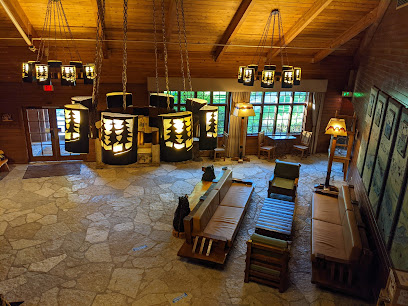
Local Phrases about Starved Rock State Park
-
- HelloAy-up
[ay-uhp] - GoodbyeTa-ra
[tah-rah] - YesAye
[ai] - NoNay
[nay] - Please/You're welcomePlease/Tha'rt welcome
[pliz/tha-rt wel-kum] - Thank youCheers
[cheers] - Excuse me/SorryPardon me
[par-dn mee] - How are you?How's tha?
[hows thah] - Fine. And you?Reight. An' thi?
[rayt. an thee] - Do you speak English?Dost tha speak English?
[dost thah speak ing-glish] - I don't understandAh divvent understand
[ah div-ent un-der-stan]
- HelloAy-up
-
- I'd like to see the menu, pleaseAh'd like t'see t'menu, please
[ahd like t see t menu, pliz] - I don't eat meatAh divvent eat meat
[ah div-ent eet meet] - Cheers!Skol!
[skol] - I would like to pay, pleaseAh'd like t'pay, please
[ahd like t pay, pliz]
- I'd like to see the menu, pleaseAh'd like t'see t'menu, please
-
- Help!He'p!
[hep] - Go away!Clear off!
[clayr off] - Call the Police!Ring t'cops!
[ring t cops] - Call a doctor!Ring t'doc!
[ring t dock] - I'm lostAh'm lost
[ahm lost] - I'm illAh'm poorly
[ahm paw-lee]
- Help!He'p!
-
- I'd like to buy...Ah'd like t'buy...
[ahd like t buy] - I'm just lookingAh'm just lookin'
[ahm just look-in] - How much is it?Ow much is it?
[ow much is it] - That's too expensiveThat's reet dear
[thats rayt deer] - Can you lower the price?Can tha drop t'price?
[can thah drop t price]
- I'd like to buy...Ah'd like t'buy...
-
- What time is it?What's time?
[whats time] - It's one o'clockIt's one o'clock
[its one o'clock] - Half past (10)Ha' past ten
[haff past ten] - MorningMornin'
[morn-in] - AfternoonAfternoon
[aft-er-noon] - EveningEvenin'
[ev-en-in] - YesterdayYest'day
[yest-day] - TodayToday
[to-day] - TomorrowT'morra
[t mor-ra] - 1One
[wun] - 2Two
[too] - 3Three
[three] - 4Four
[for] - 5Five
[fiv] - 6Six
[siks] - 7Seven
[sev-en] - 8Eight
[ayt] - 9Nine
[nine] - 10Ten
[ten]
- What time is it?What's time?
-
- Where's a/the...?Where's a/the...?
[wheres a/the] - What's the address?What's t'address?
[whats t address] - Can you show me (on the map)?Can tha show me (on t'map)?
[can thah show me (on t map)] - When's the next (bus)?When's t'next (bus)?
[whens t next (bus)] - A ticket (to ....)A ticket (to ....)
[a ticket (to)]
- Where's a/the...?Where's a/the...?
History of Starved Rock State Park
-
The name 'Starved Rock' originates from a dramatic and tragic tale involving a conflict between the Illinois and Ottawa tribes. In the late 1760s, after the assassination of the Ottawa leader, Chief Pontiac, by an Illinois warrior, the Ottawa sought revenge. The Illinois tribe took refuge atop a large sandstone butte, now known as Starved Rock. Surrounded by their enemies, they eventually succumbed to starvation, giving the rock its haunting name.
-
In 1673, French explorers Louis Jolliet and Father Jacques Marquette passed through the Illinois River near what is now Starved Rock State Park. Just a few years later, in 1682, French explorer René-Robert Cavelier, Sieur de La Salle, constructed Fort St. Louis atop Starved Rock. This fort served as a strategic point for French control over the vast region and as a center for fur trading.
-
Fort St. Louis, built by La Salle in 1682, played a crucial role in the early French colonization of the Illinois Territory. Positioned atop the formidable Starved Rock, the fort offered a commanding view of the Illinois River and the surrounding area. It became an important trading post and a defensive stronghold against rival European powers and hostile Native American tribes. However, the fort was eventually abandoned in the early 1700s as French influence waned.
-
In the late 19th and early 20th centuries, the area around Starved Rock began to gain popularity as a natural tourist destination. Efforts to preserve the unique geological features and historical significance led to the establishment of Starved Rock as a state park in 1911. The park’s development included the construction of trails, picnic areas, and lodges, making it more accessible to the public while preserving its natural beauty.
-
Long before European explorers arrived, the area around Starved Rock was inhabited by Native American tribes, including the Illinois, Miami, and Potawatomi. The Illinois Confederation, in particular, left a significant mark on the region, with numerous archaeological sites indicating their presence. The park’s rich natural resources, including the river and abundant wildlife, made it an ideal location for these early inhabitants.
-
During the Great Depression, the Civilian Conservation Corps (CCC) played a major role in the development and preservation of Starved Rock State Park. From 1933 to 1942, CCC workers built trails, shelters, and other infrastructure, many of which are still in use today. Their efforts not only provided jobs during a time of economic hardship but also helped to enhance the park’s appeal and accessibility for future generations.
Starved Rock State Park Essentials
-
Starved Rock State Park is located in Oglesby, Illinois. The nearest major airport is Chicago O'Hare International Airport (ORD), approximately 100 miles northeast of the park. From Chicago, you can either rent a car or take a bus to reach the park. The drive takes approximately 2 hours via I-55 S and IL-178 S. Alternatively, you can take a train from Chicago to Mendota, which is about 20 miles from the park, and then use local transportation options to reach the park.
-
Within Starved Rock State Park, the best way to get around is on foot. The park features 13 miles of trails that lead to various canyons, waterfalls, and scenic overlooks. If you prefer not to hike, there are bicycle rentals available. For longer distances, local taxis and ride-sharing services can be used to get to and from the park. During peak seasons, a trolley service operates within the park, making stops at key locations.
-
The United States Dollar (USD) is the official currency. Credit cards are widely accepted in the park's visitor center, gift shop, and nearby restaurants. However, it's advisable to carry some cash for smaller vendors or in case of emergencies. ATMs are available at the visitor center and in nearby towns like Oglesby and Utica.
-
Starved Rock State Park is generally safe for tourists. However, it's important to stay on designated trails and be cautious near cliffs and waterfalls. Petty crime is rare, but it's always good practice to keep an eye on your belongings. Avoid solitary hiking, especially during early morning or late evening hours. Nearby towns like Oglesby and Utica have low crime rates, but remain vigilant in unfamiliar areas.
-
In case of an emergency, dial 911 for immediate assistance. The park has emergency call boxes located at the visitor center and various trailheads. The nearest hospital is Illinois Valley Community Hospital in Peru, approximately 10 miles from the park. It is advisable to carry a basic first-aid kit and have travel insurance that covers medical emergencies.
-
Fashion: Do wear comfortable, weather-appropriate clothing and sturdy hiking boots. Avoid wearing flip-flops or sandals on trails. Religion: There are no specific religious considerations in the park, but always respect the natural environment. Public Transport: The park does not have an internal public transport system, but the seasonal trolley is a convenient option. Greetings: A friendly 'hello' or a nod is common among hikers. Eating & Drinking: Do carry water and snacks, but always pack out what you pack in. Don't litter; use designated trash bins. Do try local eateries in nearby towns for a taste of regional cuisine.
-
To experience Starved Rock State Park like a local, visit during weekdays or off-peak seasons to avoid crowds. Early mornings offer the best light for photography and a peaceful atmosphere. Participate in guided tours and events organized by the park to learn about its natural and historical significance. Don't miss the seasonal waterfalls, especially after a rain. For a unique experience, join a winter eagle watching tour along the Illinois River.
Trending Landmarks in Starved Rock State Park
-
Matthiessen State Park
-
Starved Rock State Park Visitor Center
-
Grand Bear Resort at Starved Rock
-
Starved Rock Lodge & Conference Center
-
Buffalo Rock State Park
-
Starved Rock State Park Campground
-
Wildcat Canyon
-
Matthiessen State Park Fort
-
LaSalle Canyon
-
I&M Canal Boat
-
Lover's Leap Overlook
-
KAYAK STARVED ROCK CAMPGROUND
-
Starved Rock Family Campground
-
Illinois Canyon
-
Illinois Waterway Visitors Center
Nearby Cities to Starved Rock State Park
-
Things To Do in Joliet
-
Things To Do in Maui
-
Things To Do in Naperville
-
Things To Do in Peoria
-
Things To Do in Bolingbrook
-
Things To Do in Bloomington
-
Things To Do in Elgin
-
Things To Do in Rockford
-
Things To Do in Schaumburg
-
Things To Do in Oak Lawn
-
Things To Do in Berwyn
-
Things To Do in Cicero
-
Things To Do in Palatine
-
Things To Do in Arlington Heights
-
Things To Do in Chicago













